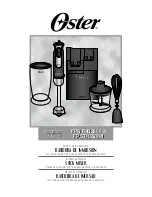
Yamaha Technology
●
Omni Outs
Yamaha’s OMNI outputs are user-assignable – i.e. he user can specify what signal is output via which connector – for flexible signal routing and system
configuration. Since the outputs are internally assignable, you can change output signal routing without having to actually physically reconnect cables. The LS9
allows you to assign any of the 16 MIX bus, 8 MATRIX bus, stereo out, mono out, monitor out, and even the input channel direct out signals to any o the OMNI
output connectors� For example, when using the LS9-16 for a small live sound application you might use two outputs for the main stereo outputs that will drive
the house system, four outputs from MIX buses for stage monitoring, and one output from a MATRIX bus to feed a dressing-room system� That’s seven out of
eight outputs assigned in a meaningful and practical way for the application� In a digital mixer like the LS9 that provides all the necessary dynamic, EQ, and effect
processing built in, the OMNI OUT approach makes maximum use of the available space and resources while allowing the user to customize the console’s output
configuration to suit his or her particular needs.
●
MIX Bus
Mix buses allow you to group input sources into “stems” for specific purposes. Stage monitor sends, effect
sends, and recording feeds are all good examples of signals that can be conveniently grouped using the mix
buses� A number of operational variations are provided to optimally suit the application: the mix bus signal can
be derived before (PRE) or after (POST) the channel fader, it can be linked to master level control (VARI), or
it can be fixed at nominal level (FIXED). Since the pre-fader signal is not affected by the setting of the channel
fader, a PRE/VARI mix bus output is idea for stage monitor feeds, for example, whereas POST/VARI or POST/
FIXED mix bus output is generally preferable for a front-of-house or broadcast feed� This type of versatility
means that the console has high utility value and can easily adapt to a wide range of system needs�
●
Mini-YGDAI Expansion Slots
The Mini-YGDAI (Yamaha General Digital Audio Interface) slot format has been specifically designed to
provide open-ended expansion capability� Input and output expansion in a variety of analog and digital audio
formats is provided via Mini-YGDAI cards that install easily in the slots� An impressive selection of I/O cards is
available, including several from third-party manufacturers� The system was originally designed to allow direct
digital connection to multi-track recording equipment for high-quality recording applications, but it soon grew
to include analog I/O expansion capabilities that could be used to add input and/or output channel capacity to
a mixer without having to add a complete sub-mixer� Mini-YGDAI expansion slots can also be used for digital
connection to remote stage boxes. Remote stage boxes complete with high-performance head amplifiers
and A/D conversion capability can be remotely controlled from the console, while digital audio signals are
transferred to the console over long distances with no signal degradation� This type of setup offers the dual
benefits of dramatically reduced physical cabling requirements and freedom from induced noise. Ethernet-
based audio networking systems such as CobraNet™ can be implemented via Mini-YGDAI cards to enable a
vast range of network functionality�
●
SPX Effect Processors
Ever since their introduction in the 80’s, the DSP LSIs and algorithms used in Yamaha SPX effect processors
have undergone continuous growth and improvement that have made them the first choice for outboard
processing in critical recording and live sound applications� Nowadays SPX processors are built right into
high-performance Yamaha mixers and related sound gear� SPX processing delivers not only some of the
finest reverb and delay effects available, but also a variety of other effects such as flangers, chorus, distortion,
and more� The LS9 consoles feature four built-in SPX effect stages that can, for example, be used to
1 4 5 6 7 8
1
4
5
6
7
8
9 10 11 1 1 14 15 16
CH
Mix Out
Matrix
Out
Main Stereo
Out
Bus
OMNI Out
FOH R
Stage Monitor 1 ~ 4
FOH L
Example 1
1 4 5 6 7 8
1
4
5
6
7
8
9 10 11 1 1 14 15 16
CH
Mix Out
Matrix
Out
Main Stereo
Out
Bus
OMNI Out
FOH R
Stage Monitor 1 ~ 4
FOH L
Example : You could modify the output assignments as follows:
(If a mistake is made in the physical wiring, you can re-assign the signals internally.)
18
Summary of Contents for LS9 Editor
Page 22: ...Block Diagram 22...
Page 23: ...23...






































